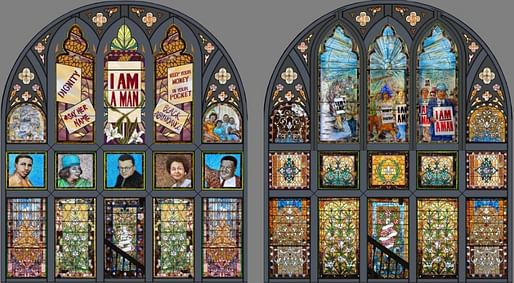
Memphis’ Clayborn Temple, a historic civil rights landmark, is set to undergo a $25 million renovation. The five-year-long project hopes to “not only preserve its historic significance but also usher in a new era of vitality for this cultural gem and the surrounding community,” as seen in new renderings by Self+Tucker Architects.

The building was originally constructed in 1892 as Second Presbyterian Church, where it served an all-white congregation. In 1949, the building was sold to an African Methodist Episcopal congregation for $100,000 and renamed Clayborn Temple.

Throughout the Civil Rights Movement of the 1960s, the church served as an important node for social, cultural, spiritual, and political expressions for the city’s African American communities, ultimately becoming the organizing headquarters for The Sanitation Workers’ Strike of 1968, Dr. Martin Luther King Jr.’s last campaign.

“As an important sacred space in American history, in Black history, and in Memphis history, Historic Clayborn Temple has an opportunity to bring people together in a place of nurturing, peace and love,” said Anasa Troutman, Executive Director of Historic Clayborn Temple, about the project. “With healing arts and culture programming, a museum that honors the history of the building, and community outreach initiatives that support economic justice, we’re committed to reclaiming a sacred space for the community, and ensuring that the resilient spirit of this iconic landmark continues to inspire generations yet to come.”

The latest project will see the restoration and reimagination of the church’s stained-glass windows. Designed by Memphis-based visual artists Sharday Michelle and Lonnie Robinson, the reimagined windows tell the story of the Sanitation Workers’ Strike, including five panes that depict major figures involved in the strike: Larry Payne, Cornelia Crenshaw, Rev. James Lawson, Maxine Smith, and T.O. Jones. Meanwhile, the building’s 3,000 pipe grand organ will be dismantled, removed, and transported to a restoration specialist in New York before being reassembled and reinstalled in a historically accurate condition.

Aside from the renovation of the historic church, a new building will be constructed on the property to serve as a museum, including an interactive exhibit about the history of the church and the role of the congregation in the Civil Rights Movement. Meanwhile, an artists-in-residence project during the renovation will be launched to ”foster creative expression and professional growth for emerging and established Memphis-based artists.”
The project is expected to be completed in 2026.
No Comments
Block this user
Are you sure you want to block this user and hide all related comments throughout the site?
Archinect
This is your first comment on Archinect. Your comment will be visible once approved.